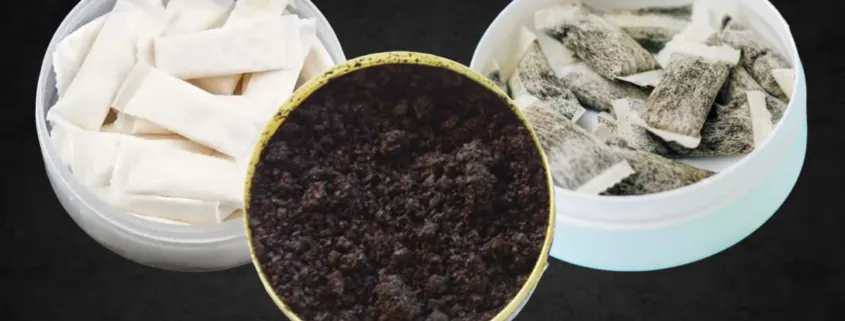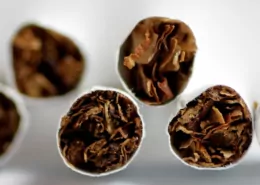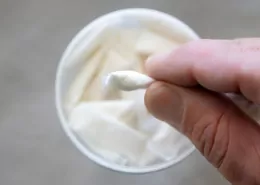Nicotine Pouches vs. Snus and Chew Tobacco – Key Differences
If you use smokeless tobacco or are curious about nicotine pouches, understanding how these oral products differ matters. While usage seems similar, from tobacco content to flavors, multiple distinctions exist.
FDA Classification: Tobacco vs Non-Tobacco
The FDA deems nicotine pouches as non-tobacco products. They contain no tobacco-derived ingredients, unlike dip, snuff, snus and other smokeless items.
Instead, pouches use synthetic nicotine and plant-based materials like food-grade cellulose for the pouch itself and filler matrix inside holding nicotine liquid. Cellulose is a consumable material found in everyday food & pharmaceutical products, providing a smooth mouthfeel during use.
Tobacco Leaf Risks
Smokeless tobacco’s tobacco curing, aging, and processing produces tobacco-specific nitrosamines (TSNAs) – carcinogenic chemicals absent from nicotine pouches.
A 2016 study found TSNAs exist in smokeless tobacco even without combustion due to production methods. Nicotine pouches circumvent exposure to these potential toxins via synthetic nicotine, improving safety profiles closer to nicotine gums.
Chew, Snuff and Snus Types
The CDC categorizes smokeless tobacco into chewing tobacco (loose leaf, plug, twist) and snuff. Snuff comes as fine tobacco powder that users inhale or place in the mouth.
Moist snuff pouches (snus) resembles nicotine pouches outwardly but contain processed tobacco like other smokeless types. So while snus and nicotine pouches share discreet pouch format and lack of spitting, nicotine pouches are not tobacco products.
Flavor Experience Differences
Tobacco dominates the flavor profile in smokeless tobacco options, even sweetened and flavored varieties. This constrains innovation outside of tobacco color schemes.
Conversely, synthetic nicotine and lack of tobacco in pouches grants more latitude for novel fruit and mint flavors reminiscent of early vaping e-liquids. Brands like Juice Head or Dryft exemplify this flavor possibilities of nicotine pouches without tobacco constraints.
So while the tobacco taste of snus or chew has its fans, nicotine pouches mirror vaping’s flavor diversity which proved integral to transitioning from unpalatable cigarettes.
Further Pouch Ingredient Distinctions
Beyond no tobacco content, nicotine pouches leverage other consumable ingredients rarely found in tobacco products:
- Cellulose – The bulk base material comprising the pouch and nicotine carrier matrix.
- Flavorings – Synthetic flavor compounds like those in candies and fruit drinks.
- Sweeteners – Sugar substitutes to accentuate flavors and aromas.
- Buffers – Sodium bicarbonate to optimize nicotine absorption.
- Moisturizers – Vegetable glycerin and sodium alginate maintain moisture and prevent hardness.
- Preservatives – Potassium sorbate prevents microbial growth and maintains freshness.
So along with tobacco exclusion, nicotine pouches utilize a mix of common food and pharmaceutical ingredients to craft an alternative oral nicotine experience.
Read more:
One Pouch, Two Experiences
To the unaware, snus and nicotine pouches may look interchangeable when held side-by-side. Both tuck neatly inside the lip. Both lack spitting. But the underlying differences in tobacco content, flavors, and formulation create vastly different user experiences.
Synthetic nicotine also enables precise user control over nic strength. So while outward appearances align, the pouches offer distinct choices for informed nicotine consumers.
In summary, nicotine pouches warrant consideration alongside vape gear or smokeless tobacco thanks differences in tobacco risks, flavors, and customization.
- HHC Vapes: What Are They & Are They Safe? - July 31, 2025
- Cannabis and Vape Shop Workers Rank Happiest in Nation - July 31, 2025
- Richmond, VA, Restricts New Vape & Tobacco Shop Locations - July 31, 2025









